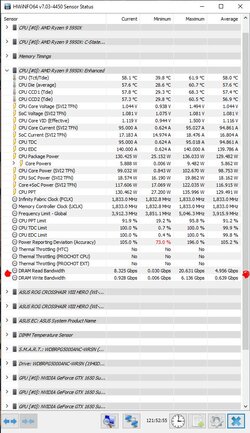- Joined
- Mar 7, 2008
I only just noticed this on my new Zen 3 laptop. Apparently it has been in hwinfo64 since the current version was released early April, but I didn't have any modern AMD systems at that time.
I wonder if it could be a useful diagnostic tool to see how different software behaves, and when. This is new to me so I don't even know if the numbers it reports even make any sense, but this is an exciting new tool for probing software + hardware performance in more detail than just looking at the end output.
I wonder if it could be a useful diagnostic tool to see how different software behaves, and when. This is new to me so I don't even know if the numbers it reports even make any sense, but this is an exciting new tool for probing software + hardware performance in more detail than just looking at the end output.

